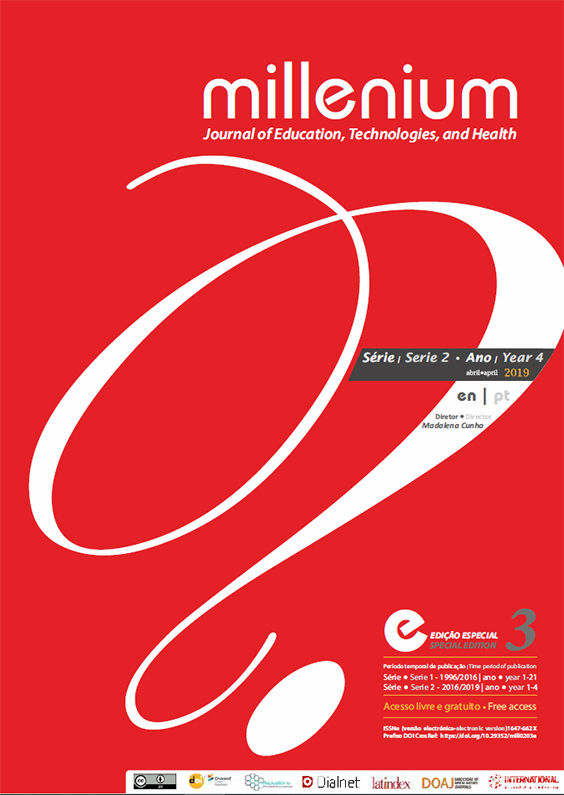Mammary neoplasms in dogs and cats. Contribution for promotion of well-being
DOI:
https://doi.org/10.29352/mill0203e.05.00186Keywords:
Mammary neoplasm, Mastectomy, Assertive management, Early diagnosis, Early ExcisionAbstract
Introduction: In recent years, it has been found a significant increase in the incidence of human neoplasias worldwide, which is also one of the main causes of morbidity and mortality in pets, highlighting the mammary tumors as neoplastic process that most affects our animals.
Objectives: To analysis of the current paradigm of neoplasias in pets; Promoting awareness of tutors and professionals of the animal health team for a more assertive management, in particular with regard its detection and early exeresis.
Methods: Retrospective study contemplating a sample of dogs (n=20) and cats (n=12) with mammary masses submitted to surgical excision and histopathological diagnosis.
Results: In the analyzed sample, was observed a higher frequency of breast neoplasms in dogs of undetermined breed and Common European breed cats, with the mean age, for both species, close to 10 years of age. There was also a higher frequency of malignant breast neoplasms, 75% in bitches and 66.7% in the cats, in relation to the benign ones.
Conclusions: It was possible to verify that, in the region of the country contemplated in this study, more malignant mammary neoplasms were diagnosed than benign ones, probably motivated by the late surgical excision of large mammary masses, sometimes ulcerated.
Downloads
References
Cassali GD, Lavalle GE, De Nardi AB, Ferreira E, Bertagnolli AC, Estrela-Lima A (2011). Consensus for the diagnosis, prognosis and treatment of canine mammary tumors. Brazilian Journal of Veterinary Pathology: 4: 153-180.
Ehrhart N (2013). Surgical Treatment for mammary tumors. Clinician’s brief: 68-72. Retirado de http://www.cliniciansbrief.com/sites/default/files/attachments/Surgical%20TreatTrea%20for%20Mammary%20Tumors.pdf, consultado em 20/01/2018.
Garcia A, Mesquita J, Nóbrega C, Vala H (2009). Cuidados paliativos em oncologia veterinária. Millenium. 37 (14). ISSN 0873-3015. Retirado de http://revistas.rcaap.pt/millenium/article/view/8271/5883, consultado em 22/02/2018. Goldschmidt MH, Peña L, Zapulli V (2016). Tumours of the Mammary Gland. In: Meuten DJ (Ed). Tumors in domestic animals (5th Edition). Wiley –Blackwell: 723-733. ISBN: 978-0-813-82179-5.
Jones TC, Hunt RD, King NW (1997). Mammary Gland Veterinary Pathology (6th edition). Williams & Wilkins: 1191-1201.
Lana SE, Rutteman GR, Withrow SJ (2007). Tumors of the mammary gland. In: Withrow SJ, Vail DM, eds. Withrow and macewen's Small Animal Clinical Oncology (4th edition). Missouri, E.U.A: Saunders Elsevier: 619-635.
Lemos MM, Esteves F, Paiva RC, Santos CA, Vala H (2009). Neoplasias mamárias em canídeos. Millenium. 37:53-70. ISSN 0873-3015. Retirado de http://revistas.rcaap.pt/millenium/article/view/8270/5882, consultado em 23/02/2018.
MacEwen EG, Withrow SJ (1996). Tumors of the mammary glands. In: MacEwen EG, Withrow SJ, eds. Small Animal Clinical Oncology (2nd edition). Philadelphia, E.U.A.: Saunders: 356-372.
Mialot JP, Lagneau F, Parodi AL (1981). Tumores mamários na cadela. A Hora Veterinária, ANO I (2):33-39.
Miranda N, Portugal C (2014). DGS - Programa Nacional para as doenças oncológicas. Avaliação e Monitorização dos Rastreios Oncológicos Organizados de Base Populacional de Portugal Continental. Relatório.
Misdorp W, Romijn A, Hart AA (1991). Feline mammary tumors: a case-control study of hormonal factors. Anticancer Research.11:1793-1797.
Misdorp W (2002). Tumors of the mammary gland. In: Meuten DJ (Ed). Tumors in domestic animal (4th edition). Iowa, E.U.A: Iowa State Press: 575-606.
Moore A (2006). Advances in the treatment of mammary neoplasia. In: World Congress WSAVA/FECAVA/CSAVA: 562-565.
Nelson R, Couto G (2001). Distúrbios da glândula mamária. Medicina Interna de Pequenos Animais. (2 ed.) Guanabara Koogan. Rio de Janeiro, Brasil: 686-690.
Perez MD, Pena L, del Castillo N, Nieto AI (2000). Factors influencing the incidence and prognosis of canine mammary tumours. Journal of Small Animal Practice. 41:287-291.
Rodney L, Page MS (2001). Prognostic factors for canine and feline mammary cancer. In: Proceedings of the Atlantic Coast Veterinary Conference. Retirado de http://www.vin.com/VINDBPub/SearchPB/Proceedings/PR05000/PR00393.htm, consultado em 21/01/2018.
Rutteman GR, Kirpensteijn J (2003). Tumours of mammary glands. In: Lascelles D, Dobson J, eds. Manual of Canine and Feline Oncology (2nd edition). Gloucester, U.K.: British Small Animal Veterinary Association: 234-242.
Sorenmo KU, Rasotto R, Zappulli V, Goldschmidt MH (2010). Development, anatomy, histology, lymphatic drainage, clinical features, and cell differentiation markers of canine mammary gland neoplasms. Veterinary Pathology.48:85-97.
Sorenmo KU, Worley DR, Goldschmidt MH (2013). Tumors of the mammary gland. In: Withrow SJ, Vail DM, eds. Withrow and macewen's Small Animal Clinical Oncology (5th edition). Missouri, E.U.A: Saunders Elsevier: 538-556.
Travassos F (2004). Lesões mamárias felinas: contributo para a sua caracterização biopatológica. Dissertação de doutoramento. Universidade de Trás-os-Montes e Alto Douro, Vila Real: 3-8. Retirado de https://repositorio.utad.pt/handle/10348/32, consultado em 24/02/2018.
Vala H, Esteves F, Mega A, Santos C, Cruz R, Nóbrega C, Mesquita J (2016). Adaptation of the ABCDE model from Human Medicine to communicate bad news to the owner of the oncologic patient in Veterinary Medicine. Millenium. 2(1): 27-35. Retirado de http://revistas.rcaap.pt/millenium/article/view/10303/7626, consultado em 23/02/2018.
Villalobos A (2007). Canine and Feline Geriatric Oncology (1st edition). Blackwell Publishing: 89-102.
Withrow SJ, Vail DM, Page RL (2013). Withrow and MacEwen’s small animal clinical oncology (5th edition). Missouri, E.U.A: Saunders Elsevier: 15-16.
Additional Files
Published
How to Cite
Issue
Section
License
Authors who submit proposals for this journal agree to the following terms:
a) Articles are published under the Licença Creative Commons (CC BY 4.0), in full open-access, without any cost or fees of any kind to the author or the reader;
b) The authors retain copyright and grant the journal right of first publication, allowing the free sharing of work, provided it is correctly attributed the authorship and initial publication in this journal;
c) The authors are permitted to take on additional contracts separately for non-exclusive distribution of the version of the work published in this journal (eg, post it to an institutional repository or as a book), with an acknowledgment of its initial publication in this journal;
d) Authors are permitted and encouraged to publish and distribute their work online (eg, in institutional repositories or on their website) as it can lead to productive exchanges, as well as increase the impact and citation of published work
Documents required for submission
Article template (Editable format)





